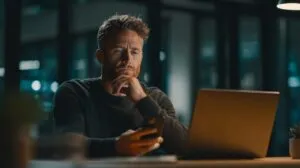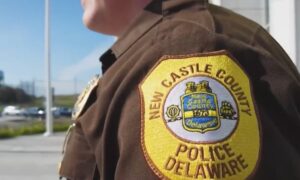Washington Park, located on the South Side of Chicago, often raises questions about safety. It’s adjacent to Hyde Park, home to the University of Chicago, and while Hyde Park is known for being relatively safe, Washington Park has earned a different reputation.
Today, I will talk about the realities of safety in Washington Park, from crime statistics to community efforts aimed at improvement. According to numerous stats, Washington Park is one of the most dangerous neighborhoods in Chicago, but there are layers to this claim.
Let’s take a closer look.
Table of Contents
ToggleCrime Statistics in Washington Park

When you look at the numbers, Washington Park comes across as a neighborhood with a significant crime problem. According to AreaVibes reports, crime rates here are about 250% higher than the national average.
Specifically, violent crimes—such as assaults and robberies—are reported to be 368% higher than the national average, AreaVibes also emphasizes. It’s easy to understand why some might hesitate before visiting or living in the area.
In fact, Washington Park is considered one of the most dangerous neighborhoods in Chicago, with Cove Security ranking it as the second most dangerous. With a reported 9,904 crimes per 100,000 people, the odds of encountering crime feel tangible.
Both violent crimes and property crimes are common, and there’s a 1 in 9 chance of being a victim of some form of crime. But crime statistics don’t always tell the whole story. While the numbers can be alarming, the reality for some residents is more nuanced.
Assaults and Robberies
According to Niche, the area reports a high assault rate of 1,787.9 per 100,000 people, which is substantially higher than the national average of 282.7. Robberies occur at a rate of 1,307.8 per 100,000 people, far above the national average of 135.5.
Murder Rates
Statistics provided by CrimeGrade show that the murder rate in Washington Park is around 0.3438 per 1,000 residents in a standard year, marking it as one of the areas with notable violence in Chicago.
Community Perception
Not everyone in Washington Park feels like they live in constant danger. Some long-time residents argue that crime in the area is often sensationalized. They believe that, while crime exists, it’s not the whole story.
The consensus among some locals is that as long as you remain alert and aware of your surroundings, it’s possible to move through the neighborhood without much trouble, particularly during daylight hours.
Residents also point out that much of the violent crime happens between people who know each other, meaning that random acts of violence might not be as common as the statistics suggest.
But that doesn’t mean it’s all safe territory. Certain areas within the neighborhood have more pronounced safety concerns. For instance, the northwest corner near the Armory is known for gang activity, specifically a group called “Drexside.”
This area requires extra caution, especially after dark. On the other hand, parts of Washington Park that border Hyde Park, like the southern and eastern sides, are generally viewed as safer.
The proximity to the University of Chicago brings a bit more security and stability, though it’s always wise to stay vigilant, especially after sunset.
Is Washington Park Safe During the Day?

Despite its challenges, Washington Park itself—the actual park—offers a refreshing green space that many locals enjoy. The park hosts events, and during the day, it’s a popular spot for jogging, biking, or simply enjoying nature.
Many visitors report feeling relatively safe in well-populated areas during daylight hours. However, like with many urban parks, it’s crucial to take precautions. Here are some simple tips if you’re planning to visit Washington Park:
- Stick to daytime visits: The park is generally safer when more people are around, making the daytime a better choice for exploring.
- Stay aware of your surroundings: Even in areas that seem calm, it’s important to keep your wits about you, especially if you’re unfamiliar with the neighborhood.
- Avoid secluded areas at night: Wandering into darker, less populated areas after dark increases your risk. Keep to well-lit, busier spots.
- Plan your public transportation wisely: If you’re using Chicago’s public transit system to visit Washington Park, it’s best to avoid late-night travel. Certain CTA stations in and around the neighborhood have mixed reputations when it comes to safety.
By following these basic guidelines, you can enjoy what the park has to offer while minimizing risk.
Local Efforts to Improve Safety

Despite the alarming crime statistics, Washington Park isn’t without hope for a better future. There are ongoing community-driven efforts to uplift the neighborhood.
Community organizations, churches, and local leaders are working together to make the area safer and provide more opportunities for residents. Some of these efforts include:
Community Center Development
According to Zoe Pharo, The City Council has approved plans for a new community center in the Washington Park neighborhood, which will serve as a hub for social services and community activities.
The center is part of broader efforts to increase safety and provide resources for residents.
Violence Prevention Grants
The Partnership for Safe and Peaceful Communities has announced nearly $1.9 million in grants to support around 250 community-led violence prevention programs, focusing on the summer and fall of 2024, PSPC reports.
These efforts are specifically aimed at neighborhoods like Washington Park that are heavily affected by gun violence.
Increased Private Funding for Violence Prevention
Private funding for violence prevention in Chicago, including the Washington Park area, is set to increase, with a goal of raising $100 million, as per Andy Grimm.
This funding aims to target individuals at the highest risk of involvement in violence and offers job training, mental health services, and other support mechanisms.
Mayor’s New Funding for Safety Programs
Hoodline reports that Chicago Mayor, Brandon Johnson launched a new funding initiative in 2024 that provides $1 million to local organizations for promoting safety in neighborhoods including Washington Park.
These funds will be used from mid-2024 through late summer 2025 to strengthen community-led efforts in violence reduction. On a broader scale, Washington Park is part of the City of Chicago’s larger anti-violence and urban renewal efforts.
These initiatives are slow-moving, but improvements are happening in certain parts of the neighborhood. The hope is that as investments continue, the area will see a steady decrease in crime, eventually leading to a safer, more vibrant community. Interestingly, Chicago is one of the top-rated cities in the U.S. when it comes to number of millionaires.
Comparing Washington Park to Hyde Park and Other Nearby Neighborhoods

Washington Park’s proximity to Hyde Park is one of its defining characteristics. Hyde Park is home to the University of Chicago and boasts cultural gems like the Museum of Science and Industry.
It’s generally considered a safer neighborhood, largely due to the university’s presence and a more consistent police presence. But as you move westward from Hyde Park into Washington Park, the contrast is sharp.
Crime becomes more of a concern, particularly in areas closer to the Dan Ryan Expressway. The stark difference between the two neighborhoods shows how concentrated gang activity and historical disinvestment can create vastly different living conditions in areas that are geographically close.
On the flip side, neighborhoods like Bronzeville, just north of Washington Park, are experiencing gentrification and development. This could signal potential growth for Washington Park, too.
The neighborhood’s location places it in an area ripe for change, and as nearby areas improve, Washington Park could see a trickle-down effect that brings more safety and opportunities over time.
How I Analyzed the Safety of This Neighborhood
- I analyzed publicly available crime statistics and reports from credible sources, focusing on the crime rates in Washington Park to provide an accurate portrayal of safety concerns in the area.
- I incorporated local perspectives from residents and existing reports to balance raw data with personal experiences, ensuring a more nuanced understanding of the neighborhood’s challenges.
- I compared Washington Park’s safety profile with nearby neighborhoods like Hyde Park and Bronzeville, giving context to the broader trends in the area’s development and safety conditions.
The Bottom Line
If you’re thinking about visiting or living in Washington Park, it’s important to balance the facts with the reality of daily life. On paper, Washington Park has higher crime rates, particularly when it comes to violent crime, which makes it one of Chicago’s riskier neighborhoods.
However, many residents have learned to live within the area’s limitations by staying aware of their surroundings, especially during the day. Efforts are being made to improve the neighborhood, and there are signs of slow but steady progress.
The presence of community organizations, along with larger city initiatives, gives hope for a safer future. At the end of the day, Washington Park is a neighborhood with challenges, but it’s also a place with potential.
If you remain cautious, visit during daylight, and avoid high-risk areas, you can experience Washington Park’s beauty without putting yourself in unnecessary danger. For those looking to move into the neighborhood, being realistic about the risks while appreciating the community efforts towards improvement can make all the difference in making Washington Park feel a bit more like home.
References
Related Posts:
- 10 Worst Neighborhoods in St Louis in 2025
- Ivy League Schools - Opportunities and Admission…
- 26 Most Dangerous Cities in US - Updated Statistics for 2025
- America's Murder Capitals: A 2025 Ranking of the…
- 12 Worst Neighborhoods in Chicago - Dangerous Places…
- 13 Most Dangerous Neighborhoods in New York 2025 -…








